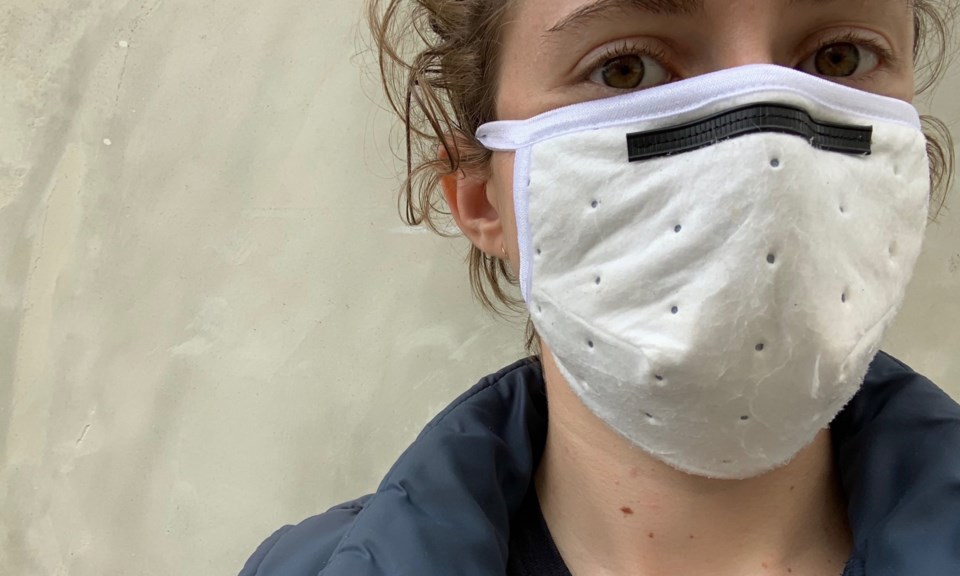This content was originally published by the Longmont Observer and is licensed under a Creative Commons license.
By Pamela Curtis
Plain cotton masks are an improvement over nothing, sure. But if you could make a better homemade mask, wouldn’t you? If you could make masks on par with N95 masks, from materials available to anyone, would you jump at the opportunity? Well, here’s that opportunity.
First, some background:
The N95 respirator is the most common of the seven types of particulate filtering face-piece respirators. This product filters at least 95% of 0.3 micron airborne particles but is not resistant to oil (https://www.cdc.gov/niosh/npptl/topics/respirators/disp_part/default.html). Current estimates (https://www.nejm.org/doi/full/10.1056/NEJMoa2001017) place the COVID-19 virus size at .125 microns. Meaning N95 masks are less than 95% effective at blocking the virus.
Enter Suay Sew Shop.
Suay is a community supported remade sewing shop in Frogtown, Los Angeles. They are traditionally an upcycling and a sustainability textile company, but when the virus hit, they saw an opportunity for their skills and know-how.
They set out to create a FREE pattern and test consumer-available materials for home sewers so that anyone could create a face-mask that rivals commercially-available N95 masks.
These masks from Suay were tested for fit and filtration effectiveness on a PortaCount Pro. Remember, N95 masks block 95% of 0.3 micron particles. The PortaCount measures particles ranging from 0.02-0.01 microns— far, far smaller than the virus particles, and far smaller than the ratings for N95 masks.
Suay posted their lowest readings, meaning the minimum protection the masks offered. They did get consistently higher readings but thought best to post the lowest reading they received. The following aspects were important to the fit to filter particles: the chin piece (which is in their pattern), a bendable nose clip piece which can be made out of coffee bag tin ties or a sturdy twist tie, adjusted tightly around nose, and elastic ties to give a tight fit to face.
When they made their mask out of tight woven cotton and added the optional insert piece and filled it with no filters, the mask filtered out only 52% of particles based on the Portacount fit test.
When they made the mask out of tight woven cotton and added the optional pocket piece, filling it with a Scott Shop Towel filter, the mask filtered out 70% of particles based on the Portacount fit test.
When they made the mask out of tight woven cotton and added the optional pocket piece, filling it with either Wypall X80 Towel or Zep Shop Towel filters, the mask filtered out 82% of particles based on the Portacount fit test.
When they made the masks out of the following materials they filtered out 87% of particles based on the Portacount fit test:
- One layer of oil absorbent towel + one layer of shop towel (Zep or Wypall)
- Two layers of shop towel (Zep or Wypall)
DISCLAIMER: As these results rely on the user to adjust fit and seal, Suay obviously cannot guarantee these filtration percentages. Your use of this pattern is voluntary. If you use it, you do so at your own risk.
Suay does not claim to be experts in the fields of masks or filtration, their attempts to quantify the effectiveness of their masks is the result of doing their best with available professional test equipment, to make something that they believe will help when the correct PPE is unavailable. Their mask pattern is not approved by the FDA or CDC, and these filter options have not been approved for mask making materials. They’ve made this pattern available in order to contribute to the public good.
But filtering out 87% of 0.02-0.01 micron particles? I’d like two dozen, please!
Link to pattern, material sources, and instructions can be found here:


